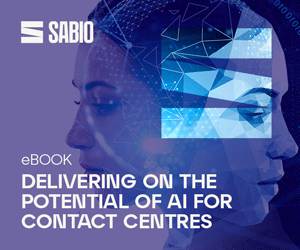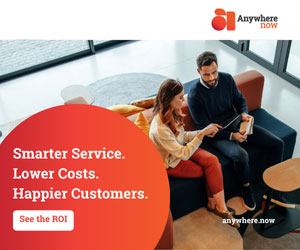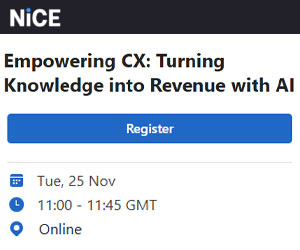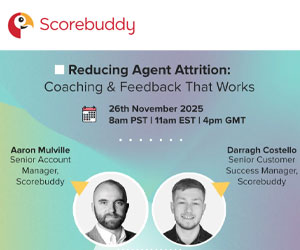If you really want to put the customer at the top of your agenda, you need to build on customer experience from the bottom rungs of your organisation. In the latest in her series of articles, Natalie Calvert shows us how.So far in this series we have looked at defining the customer experience and gaining board buy-in. Now comes the tricky bit of getting front line teams to buy in to your ideas and, more importantly, getting them to take real ownership and ultimately action.
There are two fundamentally different ways you can do this. There’s the traditional top down approach, which I discussed in last month’s column customer experience for agents. And then there’s an altogether more radical approach, which is essentially about working from the bottom up.
Before we start, I’d like to offer a word of warning: a bottom-up approach takes more time, more communication and very strong programme management. However, the results are longer-term and will be much more embedded in and across the organisation. So it’s worth sticking with.
Without further ado, then, if you are brave, open and honest enough, let’s look at the best way to kick off and implement this type of programme.
“the results are longer-term and will be much more embedded in and across the organisation”
Step 1: Sponsor
You’ll need a board level sponsor that’s totally up for it – one that’s prepared to take risks, stick their neck out and make a real difference. If you haven’t got this kind of leader or organisational culture, I would think twice about this type of approach. The sponsor’s role will be to champion your cause, update fellow board members and generally fly your flag.
Step 2: Champions
Across your front line teams you’ll need to have selected champions who will be the programme ambassadors or ‘agents of change’. The best way to get these people nominated is to hold elections across the front line.
It’s also a way of creating intrigue, excitement and communication. This means that colleagues will nominate those people best suited to represent their interests across your contact centre.
For the nominations process, you can use an online or form-filling process. If you’re really innovative, you could implement a ‘web booth’ – live web/video footage of colleagues nominating colleagues, giving the reason why they should be selected and what the team feel they can bring to the whole programme.
I’ve seen this process in the flesh and have witnessed a whole range of clips – some brilliant, fun and creative footage. But the point is that it starts to engage the whole team in the process. It gives ownership right from the very start.
After nominations, move on to the elections. And remember: be brave. The best way to hold elections is to let the teams vote. Senior managers should not take over and remove ‘unsuitables’. Yes, it’s easier said than done, but it’s critical for building trust and empowerment within the teams.
Just consider the impact of holding a polling day across your organisation, with booths opening at 7.30am and closing at 10pm – just like the local government elections. On such a day, everyone should be given a chance to vote, with special arrangements made for those staff not on-shift.
After the election count, you’ll have your champions. But do ensure you have a manageable team. I’d recommend you need a minimum of eight to a maximum of 30 people depending on your organisational size, number of channels, locations and so on.
Step 3: Creating the roadmap and programme management
I cannot emphasise enough the need for a strong and dynamic programme manager to make this project work – someone with excellent communication, diplomacy and influencing skills. The role of this person, alongside a small team, is to help build a roadmap and transformation plan, while ensuring that all parties – especially management – are kept informed.
Interestingly enough, it’s often at this stage that management teams suddenly start feeling vulnerable and push back, letting go of the initiatives they have in place and contradicting what the front line believes. This can be really tough for everyone, and a good reason to have programme managers – even if they spend a lot of their time trouble-shooting.
Meanwhile, the champions should meet on a regular basis (monthly perhaps) to give them time to express their views, build as a team and to actually create the roadmap.
The roadmap will, of course, be focused around ‘instilling a sense of customer experience across our contact centre organisation’. Typically, it will include topics such as:
- Automation versus human touch
- Financial payback
- Performance measures – which will need adapting to the new world
- Process enhancements and changes
- Defining what customers actually want
- Other departments being engaged and needing to change
- Skills and knowledge developments
- Establishing a new culture and way of working
- Product, pricing and marketing collaterals
As you can see, these are some very meaty topics. The role of programme manager is key in ensuring that the champions create a roadmap for changing the customer (and front line) experience, making decisions in a commercial and knowledgeable context. It’s also their role to ensure changes are truly actionable, dovetailing in to wider organisational initiatives.
Step 4: Front line team engagement
Sit down and listen to your champions, your front line staff, your team leaders, other managers and your customers. This exercise helps identify the good, the bad, the ugly and the commercial implications for collation, feedback and gaining universal agreement of the key issues before you even start taking any actions on the programme.
I advise this because one of the first communications has to be: “This is the current situation, this is what we are doing through setting up champions, this is what is expected of you, and this is what we are aiming to achieve”.
Each step of the way on the roadmap – every change and result – needs to be communicated regularly, time and time again. Each output needs to be clearly and simply articulated, providing feedback to the front line and the whole organisation. And, of course, using a variety of mechanisms, including e-mail, newsletter, office visuals, text messages, live group briefings, dedicated web portal, sunrise/sunset meetings or webinars.
Reporting back to the board to demonstrate the impact of your changes, both financially and from a customer point of view, is vital. Refer back to one of my earlier articles to get some key tips on how to do just that.
Above all, a sense of fun and real front line empowerment is critical to the success of the programme. If you can, try to focus on a key goal to help you along the way, for example by entering an awards programme or organising a team extravaganza.
Doing this, I promise you’ll see massive change, real engagement and significant impact from a people, organisation and customer perspective. But remember: it takes bravery, openness and honesty, and the road to transformation can often be a rocky one. Bottoms up!
Natalie Calvert is managing director at the consultancy Calcom Group
Author: Natalie Calvert
Reviewed by: Jonty Pearce
Published On: 28th Jun 2007 - Last modified: 15th Aug 2025
Read more about - Customer Service Strategy, Customer Experience (CX), Natalie Calvert, Service Strategy










































